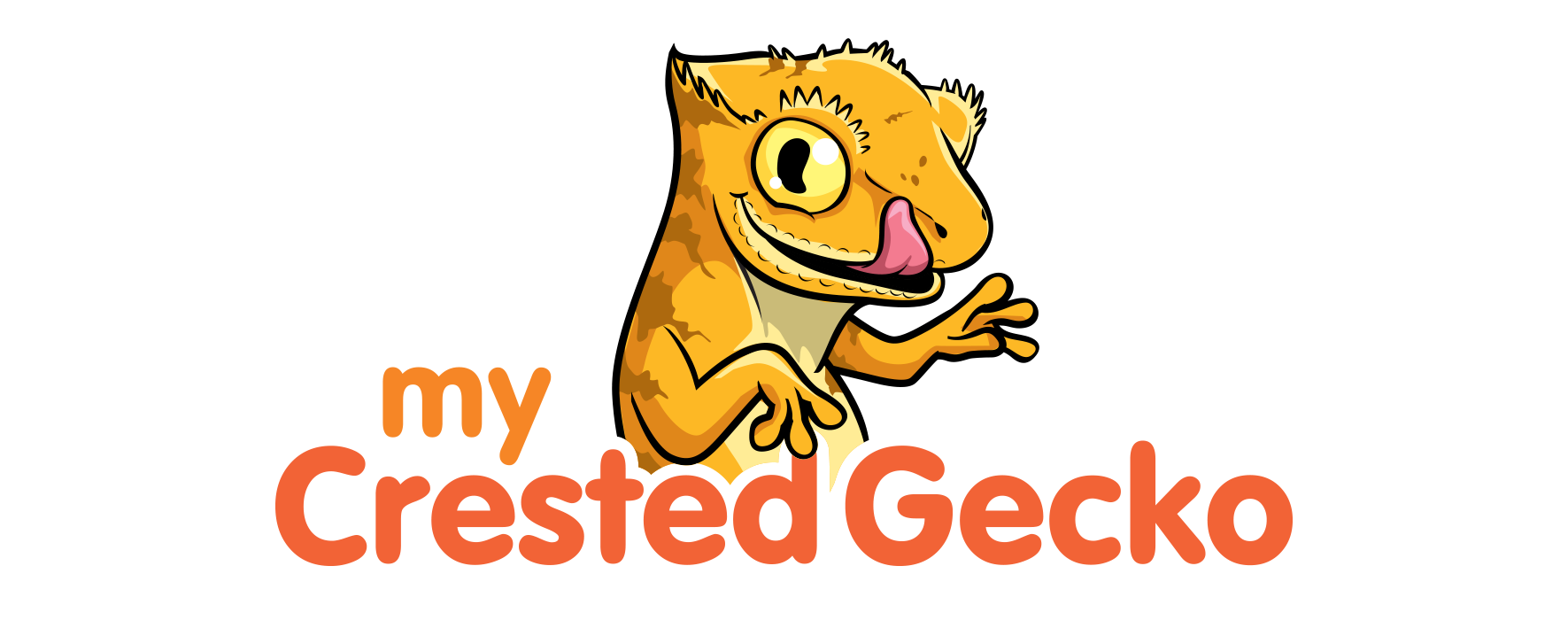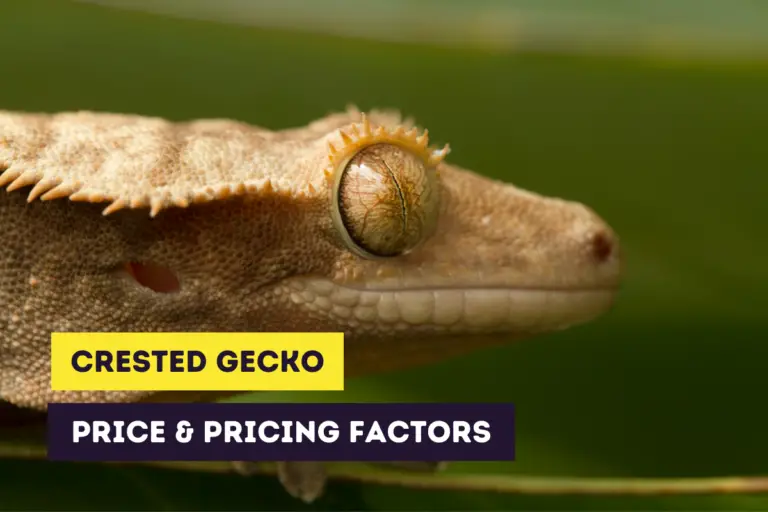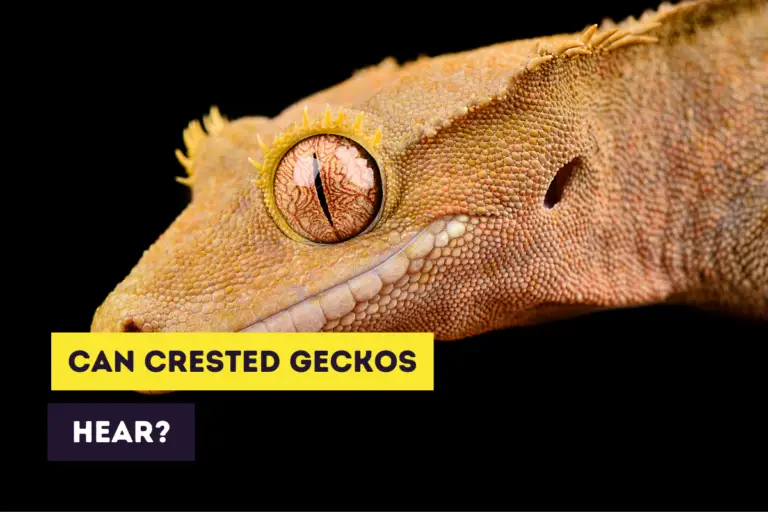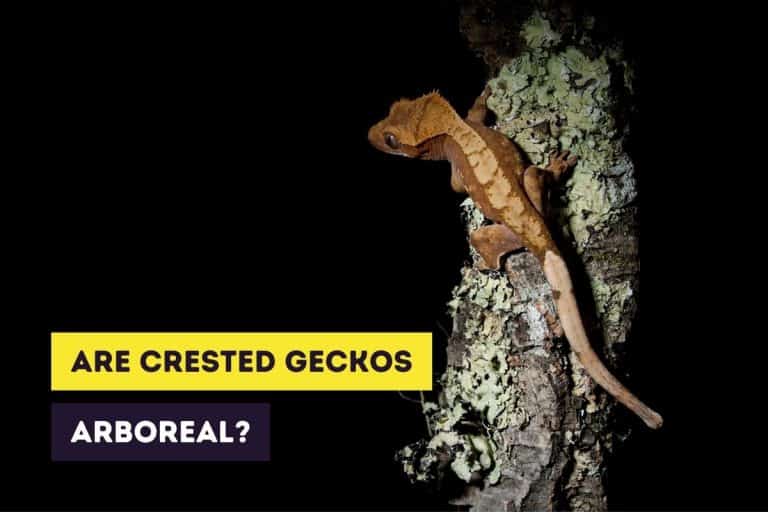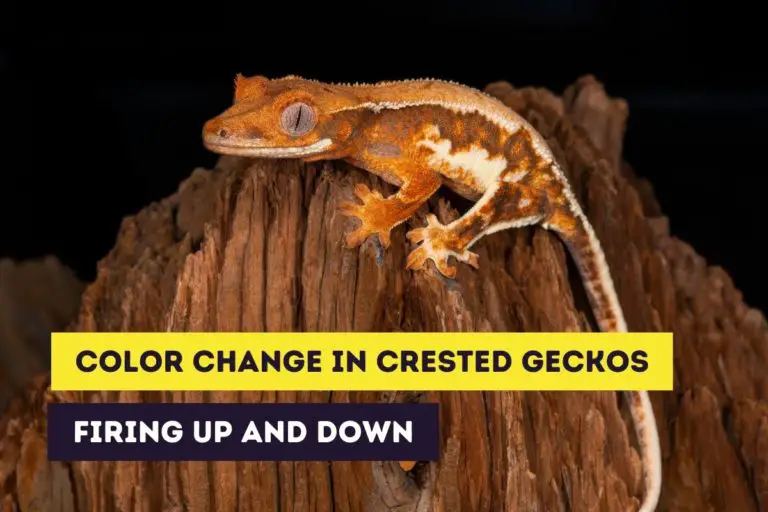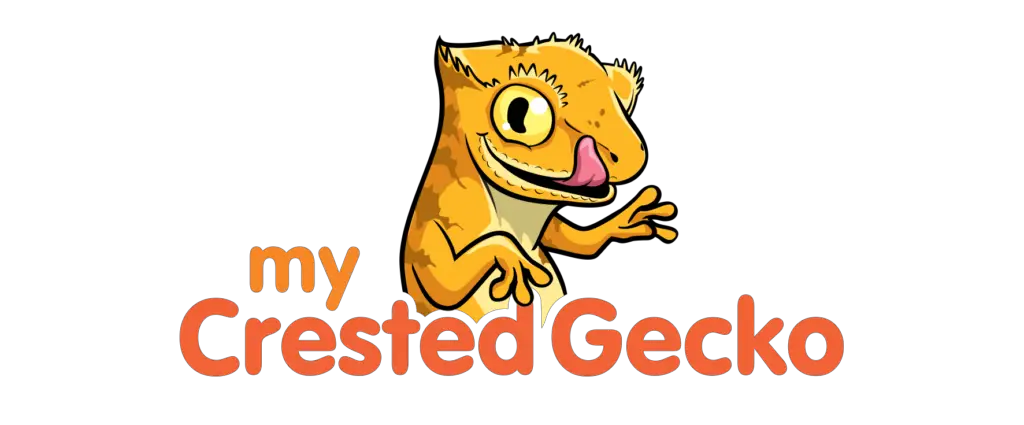Can Crested Geckos Eat Waxworms? (Feeding Instructions)
One of the most common feeder insects is the waxworm (also written as wax worm). The waxworm is a food source for all kinds of animals, from reptiles to fish and birds. But can crested geckos eat waxworms or should they be avoided?
Crested geckos can eat waxworms as an occasional treat once or twice a month. Waxworms have a soft exoskeleton and are a source of protein and vitamins. However, they’re also high in fat. Therefore, you should only feed small enough waxworms (not bigger than the head of your crested gecko).
Waxworms are widely available but are not suitable as a staple food for crested geckos. They’re not the best feeder insect you can give, but they are easier to obtain, can provide certain nutrients (such as protein), and are cheaper than, for example, hornworms. If you have an option, you should choose crickets or dubia roaches above waxworms.
In this article, you’ll learn everything about the waxworm. In the end, you’ll know how to feed these worms to your crested gecko and where to buy them.
If you’re interested in stickers or other products of crested geckos, you can always visit our Etsy Shop, which is called Artful Animalia. We currently only send stickers in the United States. If you’re interested in certain crested gecko-related products, don’t hesitate to contact us.
This site contains affiliate links to products we recommend and use ourselves. We may receive a commission for purchases that you make through these links. If you’re interested in learning more about our affiliate links, please visit our (affiliate) disclaimer.
What Are Waxworms?
Waxworms are the larval stage of wax moths. There are many species of waxworms, but there are only two species that are commercially bred:
- the lesser wax moth (Achroia grisella)
- the greater wax moth (Galleria mellonella)
Waxworms get their name from their reputation as nest parasites in bee colonies. The worms eat the beeswax combs and are considered pests by beekeepers. However, waxworms are also a food source for humans, reptiles, birds, fish, and certain rodents.
Appearance
Waxworms are insects that have a yellow-white coloration. In addition, their feet have black tips, and their heads are black or brown.
Life cycle
As already mentioned, the waxworm is the larval stage of the wax moth. Wax moths go through four stages of life: egg, larva, pupa, and adult.
Waxworms will eat and fill themselves with enough food to grow and pupate. This larval stage lasts one to six months, depending on the temperature. During this larval stage, the waxworm goes through several growth stages (called instars). However, most growth happens in the last two stages.
When the waxworm is mature, it will spin a cocoon and become a pupa.
Waxworms generally reach a length of 3/4 inch (1.9 cm) but can reach up to 1 inch (2.5 cm).
Waxworms as a food source for crested geckos
Nutritional value
Since waxworms are a popular choice among feeder insects, their nutritional value is well-known. The following table shows the average nutritional value for waxworms as feeder insects based on the numbers in the MSD Veterinary Manual.
| Components | Value (average) |
|---|---|
| Dry Matter | 38.3 % |
| Protein | 15.5 % |
| Fat | 22.2 % |
| Calcium | 0.03 % |
| Phosphorus | 0.22 % |
| Ca:P Ratio | [1]:[7.33] |
Are waxworms good for crested geckos?
Waxworms aren’t nutritional for crested geckos. They don’t provide a lot of protein or other nutrients compared to other feeder insects. They are also relatively high in fat and have a bad Ca:P ratio. However, they have a softer exoskeleton, making them more digestible than other insects.
You should always gut-load and dust the worms to ensure that your crested gecko gets additional nutrients. Most live waxworms come with the food to gut-load them. Then, all you need to do is dust them with the usual supplements.
Are waxworms safe for crested geckos?
Waxworms are safe to feed to crested geckos. They have a soft exoskeleton and won’t cause impaction or constipation. The only known risk is that your crested gecko might get addicted to waxworms. Such addiction can cause your crested gecko to refuse to eat other food.
Feeding Instructions
How many waxworms can you feed to your crested gecko?
Crested geckos can eat three to four waxworms per serving (once or twice a month). However, waxworms aren’t nutritional and are only a treat, even when gut-loaded and dusted.
Always start with just one waxworm and learn from the experience. After a while, you’ll know how many waxworms your crested gecko can eat in one serving. I recommend giving a maximum of four waxworms per serving to prevent overeating and losing their appetite the following days. Waxworms contain a lot of fat and can cause your crested gecko to become addicted to them. So don’t feed too many, even when your crested gecko can’t seem to get enough of them.
What size waxworms can you feed to your crested gecko?
Crested geckos can eat waxworms that are as big as their head. You can use the distance between their eyes as a general rule to know if the waxworm is too big to feed to your crested gecko. If the waxworm is too big, you can always cut it into smaller pieces before feeding it to your gecko.
How often can you feed waxworms to your crested gecko?
Waxworms can be fed to a crested gecko once or twice a month as a tasty treat. However, because of their low nutritional value, they should never be the base of a balanced crested gecko diet. Instead, it’s better to feed other, more nutritious insects, such as hornworms or crickets.
How to feed waxworms to your crested gecko?
Waxworms can be fed by using a tong. You can also let your crested gecko hunt the waxworms by placing the worms with your gecko in a separate tank. Lastly, you can place the waxworms in a small bowl in the terrarium. This prevents them from burrowing in the substrate.
You can use these feeding techniques for living, canned, and dried waxworms. If you feed canned or dried waxworms, I suggest using a tong to mimic a live waxworm. When you use a bowl, make sure that you get a bowl where live waxworms can’t get out, such as this bowl from Exo Terra.
Exo Terra also sells a vibrating dish called the Vivicator, which can be used for canned and dried waxworms. The product has mixed reviews and a regular bowl works just fine.
Can hatchlings and juvenile crested geckos eat waxworms?
Hatchlings are too small to eat waxworms and benefit more from a well-balanced diet focused on their growth. However, juvenile crested geckos can start eating waxworms once or twice a month as long as the waxworm isn’t too big.
What to do with leftover waxworms?
If your crested gecko doesn’t eat (all) the waxworms you’ve fed, you’ll need to dispose of the leftover worms. The best way to do this is to place the worms in a sealed bag or container and put them in a freezer for at least 24 hours. After 24 hours, you can put them in your garbage.
Where to Buy Waxworms
Waxworms are sold online, in fishing bait stores, and in pet stores worldwide.
Live waxworms
Live waxworms are usually sold in larger packs of 50 or more, although some pet stores also sell smaller bags. They are usually sold with enough food to last for several days (make sure to check this when you buy them).
Below are some of the more popular sellers and their prices (updated in April 2021). Be aware that there might also be shipping costs.
| Seller | Amount | Price |
|---|---|---|
| Rainbow Mealworms | 50 | $3.99 |
| Reptile Supply | 50 | $5.00 |
| Josh’s Frogs | 50 | $4.99 |
| Fluker Farms | 100 | $6.90 |
| PetSmart | 50 | $4.99 |
Waxworms are bred in large numbers. If you buy large numbers of waxworms, the price will be lower per worm, but you should never get too many waxworms for crested geckos unless you have a large number of crested geckos.
The lowest amount that is sold is usually 50 per pack. For such small amounts of waxworms, the price is higher than most other feeder insects (averaging $0.1 per waxworm).
It can take a long time to feed 50 waxworms if you’ve got a picky eater or only have one crested gecko. It might be easier to buy smaller amounts in a local pet store or fishing bait store in such a case.
Canned waxworms (gourmet-style)
An alternative to feeding live waxworms is getting a can of waxworms. Canned waxworms have a higher percentage of moisture and are already dead. When opened, the canned waxworms last for two to three weeks when you keep the can in a fridge. Exotic Nutrition and Fisher’s Choice sell canned (gourmet-style) waxworms.
One possible drawback of using canned waxworms is the smell. Some people have noticed that canned waxworms smell terrible and don’t use them for this reason.
Dried waxworms
If you don’t like live worms and don’t want to give canned waxworms, you can give dried waxworms to your crested gecko. Dried waxworms are available for reptiles, birds, rodents, and fish. The big brands of reptile food don’t sell dried waxworms but Exotic Nutrition does sell them in a (large) bag. These dried waxworms are harder than their live counterparts.
When you feed dried waxworms to your crested gecko, make sure to keep an eye on it the following days to make sure it still poops. I mash the dried waxworms up so they’re in tinier pieces to decrease the risk of impaction.
Want to Learn More?
If you want to learn more about crested geckos as pets, please read the following articles.
- Can crested geckos eat mealworms?
- Can crested geckos eat superworms?
- Do crested geckos need live food?
If you’re interested in getting crested geckos as pets, you should also definitely read our article about baby and juvenile crested gecko care or (adult) crested gecko care.
